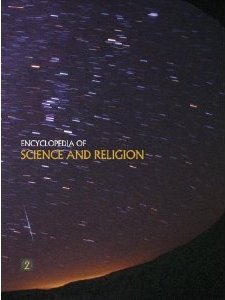 Overview
Overview
From Booklist (© American Library Association):
This encyclopedia, intended for “a wide readership from high-school students to independent researchers and academics,” deals with all aspects of the conflict and dialogue between science and religion. The list of scholars who have contributed is impressive, and the project had as a consultant and contributor Ian Barbour, physicist, theologian, and well-known author on the interplay of science and religion. The editorial point of view is that the formal consideration of the relationship between science and religion has become a new academic field of study. The troublesome potential of new technologies has brought questions into the public arena as well.
The 400-plus alphabetically arranged entries range from broad essays on topics such as Biotechnology, Causation, and Sociobiology to shorter pieces on terms such as Cybernetics, Eco-feminism, and entropy. There are also 20 biographies of important figures in the dialogue between science and religion, from Aristotle to Stephen Jay Gould. The fore matter includes an alphabetical list of all articles as well as a synoptic outline, which enables one to see all of the articles related to, for example, physical sciences or Chinese religions. The historical and contemporary relationships between the realm of science and the major religious groups–Judaism, Islam, Christian traditions, Chinese religions, Buddhism, and Hinduism–are treated individually. Major scientific and academic fields are examined in the context of the encyclopedia’s focus. Close to 70 articles on the physical sciences, for example, include entries on all the major arenas of the field: chemistry, particle physics, quantum physics, etc., each providing an overview of early research, contemporary developments and lessons, or applications to religious thought. All of the articles are signed and have bibliographies, some extensive. In addition, a nine-page annotated bibliography serves as a guide for further reading (and collection development) in various topics such as the human sciences and religion. A detailed index makes the wealth of material even more accessible.
The History of Science and Religion in the Western Tradition: An Encyclopedia (Garland, 2000) covers much of the same ground. Both are reference works of very high quality with scholarly contributors, several of them in common. But the approach of the earlier work is to treat fewer topics in broader essays. Some of the treatments are more substantial in the Garland work: medicine is covered in seven pages as opposed to two and a half. The Macmillan work does have a more global scope, including non-Western religions or belief systems. The references and bibliography of the set under review are much more up-to-date.
The comprehensive, global treatment of the historical and contemporary tensions and interplay between our sacred and secular knowledge make this an excellent addition to academic and large public libraries.
Blurbs and Links
Taede Smedes, Nijmegen, The Netherlands (from Amazon.com):
“When I was asked to contribute to this Encyclopedia (I wrote the “annotated bibliography”, the lemma on “determinism”, and co-authored the lemma on “chaos theory”), I had no idea what it would eventually look like. It was undoubtedly an ambitious project, and the editors were aware that there was no such encyclopedia available yet. This project was a venture, to be sure.
“It turned out to be an achievement that, I hope, will last for decades! If you are interested in the field of science & religion, then this encyclopedia is simply the best place to start.
“All contributions are written by leading experts in the field, and that means that you find not only contributions by theologians and historians, but also contributions by many scientists, such as (to name but a few) Francisco Ayala, John Barrow, Terrence Deacon, Max Jammer, Simon Conway Morris, and Ian Tattersall. The contributions are cross-referenced, and are written with exceptional clarity. One can browse these two volumes for hours…
Most lemmas also contain a small bibliography, so that once you are familiarized with the main ideas, you are handed the tools to dig deeper into the subject yourself.
“I know of no reference works in the field of religion & science that cover so much ground as this two-volume encyclopedia.
“If you are willing to invest some time (yes, be prepared to become addicted to ideas) and money into this encyclopedia, you will not be disappointed. Otherwise, try to convince your librarian to buy a copy for your local library. However, in that case, start saving money already, because I am sure once you’ve seen the encyclopedia, you will want a copy for yourself.”
